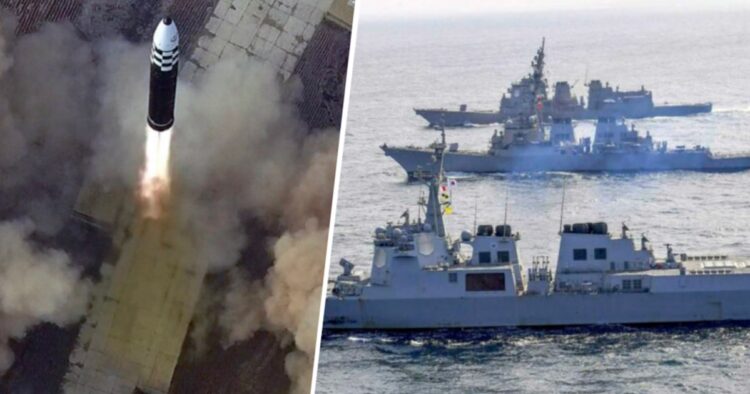In a groundbreaking move, Japan, the United States, and South Korea have joined forces to share radar information in response to North Korea’s recent ballistic missile launch on January 14. This collaborative effort aims to address escalating concerns over Pyongyang’s advancements in missile technologies, signaling a united front against the regional threat.
The trilateral collaboration seeks to enhance countermeasures against North Korea’s missile capabilities, providing the Self-Defense Forces (SDF) with improved ability to track missile trajectories efficiently. However, challenges were faced by the SDF radar during the missile’s terminal phase as it descended into the Sea of Japan, underscoring Japan’s need to bolster its defense capabilities.
According to reports from the Japanese Defense Ministry, North Korea launched a ballistic missile northeastward from an inland site on January 14. Early warning satellites belonging to US forces detected the launch, and the South Korean military closely monitored the missile’s ascent.
Upon receiving critical information from US forces, the SDF swiftly initiated missile tracking and shared acquired data with South Korea. This marks the first operational use of the immediate information-sharing system introduced in December 2023, following a landmark agreement at the Camp David summit in August 2023.
Despite facing international sanctions, North Korea has continued to advance its nuclear and missile programs, posing a significant threat to the security of South Korea, Japan, and the United States. Analysts express concerns over North Korea’s development and testing of solid-fuel weapons, which provide strategic advantages in deployment and launch times.
Philippines-based military analyst Miguel Miranda emphasized the alarming pace of North Korea’s nuclear arms buildup, urging global attention to the threat. He highlighted the Biden administration’s regional diplomacy efforts, which have fostered cooperation among the US, Japan, and South Korea in missile defense.
The radar alliance, established through a 2014 information-sharing agreement, utilizes existing systems and connects radars independently to a common platform at the US military’s Indo-Pacific Command headquarters. Geographical proximity heightens concerns about North Korea’s missiles reaching South Korea within minutes and Japan within approximately 15 minutes of launch, necessitating enhanced monitoring and tracking capabilities.
Real-time information sharing enhances the ability to monitor missile launches from various locations, addressing challenges such as Japan’s radar blind angles due to Earth’s curvature. South Korea and Japan have designed strategies to counter nuclear-capable missiles, with South Korea focusing on space-based sensors and ground-based defenses, and Japan planning fixed radar sites networked with ships and satellites.
During the recent North Korean missile launch, South Korea promptly shared information with Japan, facilitating earlier tracking crucial for interception measures. Discrepancies in flight distance estimates highlight the challenges posed by hypersonic characteristics and irregular low-altitude courses of North Korean missiles, emphasizing the need to enhance detecting and intercepting capabilities for Japan’s security.

















Comments